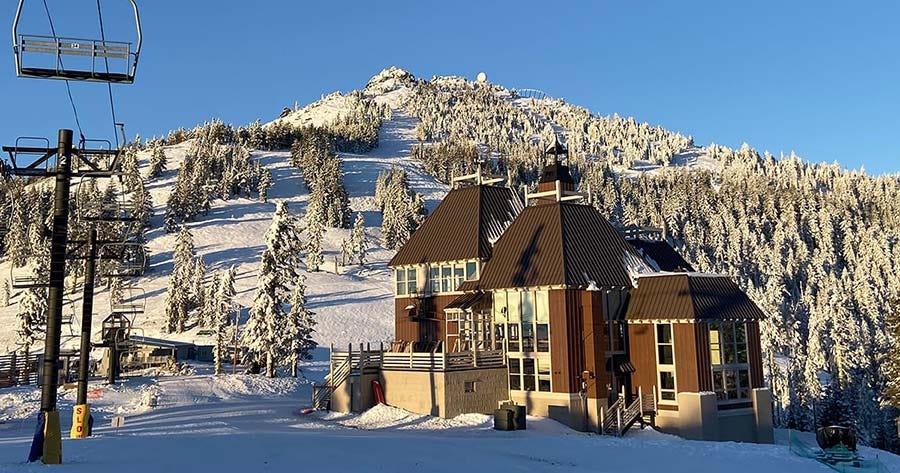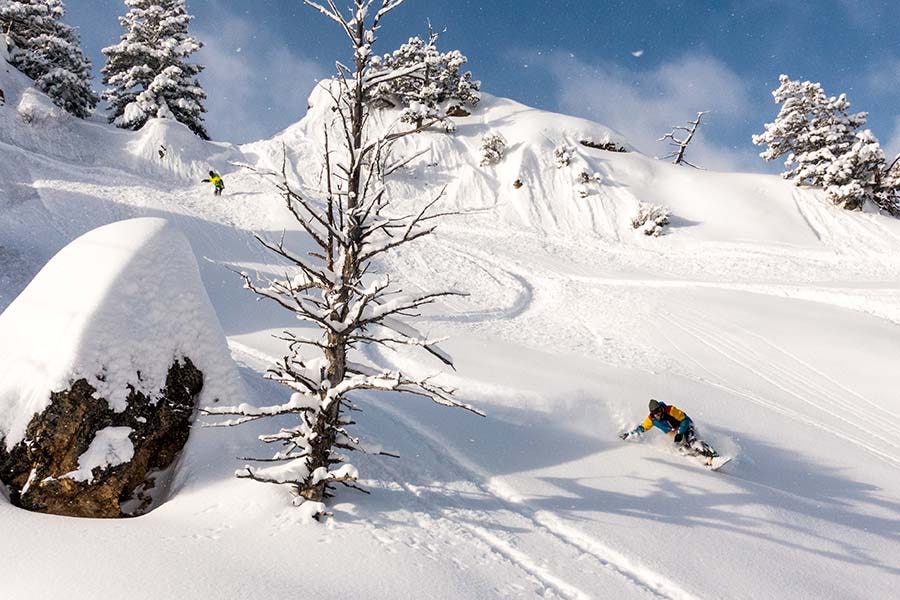The Storm Skiing Podcast is sponsored in part by:
Mountain Gazette - Listen to the podcast for discount codes on subscriptions and merch.
Helly Hansen - Listen to the podcast to learn how to get an 18.77 percent discount at the Boston and Burlington, Vermont stores.
Who
Doug Fish, President and Founder of the Indy Pass
Recorded on
April 26, 2021
Why I interviewed him
Because the Indy Pass materialized out of nowhere to help solve so many of skiing’s intractable problems: the problem of affordability, of outsized attention to too few ski areas, of the ski family as a viable entity. Even as Vail and Alterra have consolidated the continent’s best mountains onto megapasses far below the cost of single-mountain passes of five or 10 years ago, occasional skiers have recoiled at daily lift-ticket prices that blew right past the three-digit mark without even stopping to kick the dirt off their shoes. And as good a deal as the Epic and Ikon passes are, a stack of them can still stretch well beyond a family’s annual ski budget. Indy fixed this. For $796 – a touch more than the cost of a single adult Epic Pass and well below the price of an adult Ikon Pass – a family of four can ski for the season. It will require some travel and some creativity and some patience, but the reward will be days at an interesting patchwork of ski areas. There was nothing inevitable about this. Yes, there have always been independent alternatives to the so-called corporate resorts, but it took some vision to weave dozens of distinct mountains into a coherent coalition united around a common product that’s good both for ski areas and the skiers that love them. I wanted to talk to Fish about Indy’s evolution up to now and how the pass would continue to adapt to skiing’s rapid changes.
What we talked about
Doug’s great Western roadtrip of 2021; a case for ignoring ski area statistics and just showing up; exactly how much Indy Pass skier visits exploded this past season; landing Powder Mountain on the Indy Pass; how the mountain stands out even in Utah’s powder paradise; the wisdom of limiting the number of people on the mountain; why the ski area will limit the number of Indy Pass redemptions on any given day; which other Indy partners will follow suit; which parts of the sprawling Powder Mountain terrain network you can access with a lift ticket; the snowball effect of signing a big-name mountain; why some mountains don’t need the Indy Pass; skiing in Kalamazoo; a primer on Mt. Ashland, Oregon; the Indy Pass explorer; why density is good but too much density is bad; the renaissance at West Mountain, New York; the weirdness of New York skiing and which other ski areas may join; don’t give up on ORDA just yet; what happened in New England when Indy added Cannon; whether Indy is done in New England after adding Cannon, Jay Peak, Waterville Valley, and Saddleback; which New England partners Fish would add if he had his pick; whether we’re getting closer to partners in Tahoe or Colorado; where there may still be room to expand in the Midwest; the last ski area in the region that Fish covets; the top 10 Indy ski areas for 2020-21 ticket redemptions and what was surprising on that list; the appeal of White Pass; the shocking number of redemptions for Waterville Valley; what makes a ski area work and not work as an Indy partner; an updated goal for the desired number of Indy Pass resorts; Indy’s next great expansion opportunity; the novel program Indy is considering to support independent mountains that aren’t partners; how Indy set its 2021-22 pass prices and why they increased as much as they did; Indy’s financial model; why 100 percent of partners are returning for next season in spite of a smaller-than-expected Indy Pass payout; the explosion in the number of resorts with blackouts; whether the Indy Spring pass will return in 2022; why the assurance program won’t return for 2021-22; moving the Indy Pass on-sale date to the spring; Indy’s payment plan; and limiting the number of Indy Passes at the early-bird rate.

Why I thought that now was a good time for this interview
Because as it enters its third season, Indy Pass is transitioning from rough-hewn concept to polished product, with a roster of well-known and well-regarded mountains. New partners keep coming and established partners are staying. That’s good. But redemptions exploded 1,100 percent last season, pushing the payout-per-visit below the pass’ target. That’s bad. For Indy to be sustainable, it has to find the price point where skiers still feel like they’re getting a bargain and ski areas still feel like they’re not getting ripped off. Thus, new prices and lots of new blackouts. That’s going to be rough for some people who had become accustomed to Indy’s freewheeling early days. I wanted to talk to Fish about why Indy had to raise prices, how he found the right tiers, why so many more mountains have blackouts than in the past, and, maybe most important of all, how he landed Powder Mountain, the 500-inches-per-year Utah titan with strict ticket limits and a veil of exclusivity.

Why you should buy this pass
Even with the price hikes, I still think the Indy Pass is a no-brainer if you live in the Northeast, Upper Midwest, or Upper Rockies. At least it is if you have a sampler’s mentality, a willingness to drive long distances on a regular basis, and an urge to ski every possible mountain and day that you can. That or a couple of weeks off and the patience to plan a resort-hopping roadtrip. I still like Indy as a holiday complement to an Epic or Ikon Pass – hit Bolton Valley on Stowe’s busiest days, or hop over to Magic when Stratton goes nutso. The new blackout tiers will make this more challenging, and the Indy+ feels as though it’s creeping out of bargain pass territory, but you’ll have to make that choice depending on how often you think you’ll ski, how far you’re willing to travel, and how flexible your schedule is. For the organized and the committed, it’s not going to be difficult to ski this pass down to per-day prices of decades past, and have a damn good time doing it.
Additional reading/videos
I released a full breakdown of Indy’s 2021-22 pass suite earlier today. Here’s some of my past coverage of Indy Pass and its partners:
Podcasts
West Mountain, New York owners Sara and Spencer Montgomery
Granite Peak, Wisconsin GM Greg Fisher
Waterville Valley, New Hampshire GM Tim Smith
Bolton Valley, Vermont President Lindsay DesLauriers
Saddleback, Maine GM Andy Shepard (recorded before the ski area joined the pass)
Jay Peak, Vermont GM Steve Wright
Cannon Mountain, New Hampshire GM John DeVivo
Indy Pass Founder Doug Fish (May 31, 2020)
Berkshire East and Catamount, Massachusetts Owner Jon Schaefer
Magic Mountain, Vermont President Geoff Hatheway
Articles
Indy Pass Signs Saddleback, Waterville Valley (Feb. 23, 2021)
Indy Pass Adds Idaho’s Pomerelle and Soldier Mountains, Introduces Discounted Spring Pass (Feb. 2, 2021)
Lift-Served Skiing Returns to Saddleback After Five-Year Hiatus (Dec. 16, 2020)
Indy Pass Fills Out 2020-21 Lineup with Snow Ridge, Antelope Butte (Nov. 18, 2020)
Indy Pass Signs Vermont’s Jay Peak (Oct. 19, 2020)
Indy Pass Erupts Into Second Year With 630 Percent Sales Boom, Picks Up 12th New Mountain (Oct. 2, 2020)
Indy Pass Solidifies Second-Year Coalition as It Breaks Into Wyoming, Loses Mt. Abram (Sept. 1, 2020)
Magic Announces Record Pass Sales After Slashing Prices (June 21, 2020)
Indy Pass Adds Cannon and Six Other Resorts, Kids Pass, Season Pass Add-On, Simple Pass Assurance Program (May 20, 2020)















Podcast #45: Indy Pass President and Founder Doug Fish